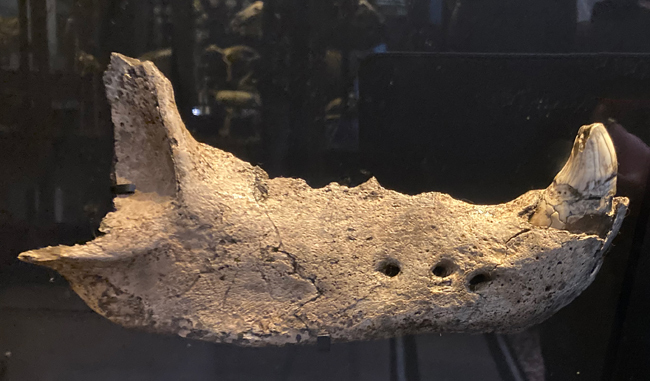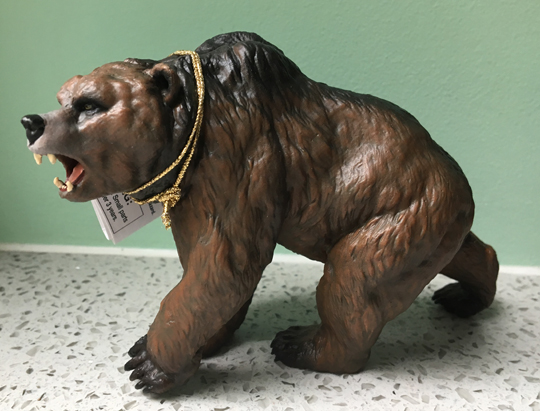What Did Cave Bears Eat? That’s the Question!
In Europe during the Pleistocene Epoch, brown bears (Ursus arctos) and the now extinct cave bear (Ursus spelaeus) co-existed. Did these large mammals compete for food? A recently published study that examined the jaw mechanics of each bear suggests that they had different diets.
Picture credit: Everything Dinosaur
Fossils from the Goyet Caves in Belgium
Three-dimensional analysis of jawbone fossils excavated from the caves of Goyet in Belgium show clear differences in jaw and dentition configuration. This suggests that brown bears and cave bears had different diets. The study also demonstrates that the diet of brown bears from 30,000 years ago differs only slightly from that of their North American relatives still living today.
Extant brown bears are the closest living relative to the extinct cave bear. Cave bears (U. spelaeus), are thought to have died out around 25,000 years ago.
Picture credit: Everything Dinosaur
The picture (above) shows a model of a cave bear (Ursus spelaeus) from the Papo model range.
To view the range of Papo prehistoric animal figures: Papo Prehistoric Animal Figures.
Cave Bears and Brown Bears
Scientists estimate that brown bears and cave bears co-existed from about 1.3 million years ago up until the extinction of the cave bear. They lived in the same habitats and probably competed for plant food. The caves of Goyet and Trou des Nutons in Belgium contain the remains of both bear species, which are about 30,000 years old.
Writing in the journal “Boreas”, Anneke van Heteren, mammal curator at the Zoologische Staatssammlung München (SNSB-ZSM), and Mietje Germonpré of the Royal Belgian Institute of Natural Sciences (RBINS) showed that the two contemporaries fed differently.
The cave bear was probably entirely vegetarian, whilst the brown bear was an omnivore even then, just like it is today. The shape and biomechanics of the jaws of the two bear species differ significantly. In addition, the scientists were also able to identify small differences in the jaws of the fossil brown bears compared to their conspecifics still living today.
Anneke van Heteren commented:
“Presumably, the fossil brown bears from Belgium ate slightly more plant food than the brown bears from North America today.”
Studying the Fossils of Cubs
The researchers also examined the fossilised jaws of cave bear cubs from the cave network. Their jaws were less well suited to chewing solid food than those of the adults.
Dr Anneke van Heteren added:
“The young bears were also still being fed milk by their mothers. Their jaws first had to adapt to the later development of their permanent dentition.”
The biomechanical differences in the jaws are particularly evident in their gape angles when chewing their food. The study team used geometric morphometrics to assess these physical differences. This is the measurement of skeletal parts with the help of measuring points, so-called landmarks. The method allowed the researchers to visualise the jawbones of the bears in three dimensions. Once a three-dimensional model has been created, the function of the jaw and the teeth can be assessed using statistical methods.
Everything Dinosaur acknowledges the assistance of a media release from the Royal Belgian Institute of Natural Sciences in the compilation of this article.
The scientific paper: “Geometric morphometric assessment of the fossil bears of Namur, Belgium: Allometry and ecomorphology” by Anneke H. van Heteren and Mietje Germonpré published in the journal Boreas.
Visit the Everything Dinosaur website: Everything Dinosaur.



